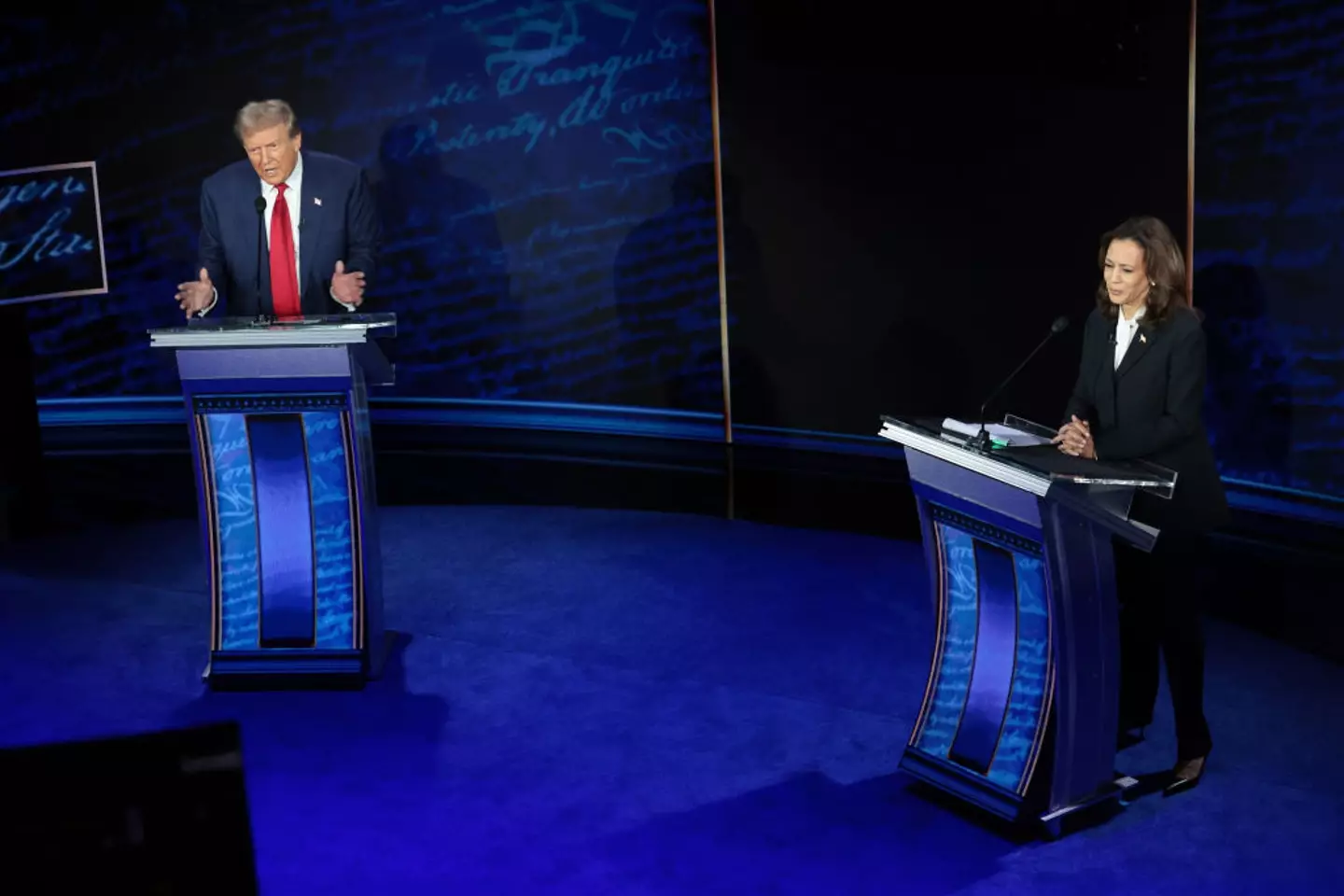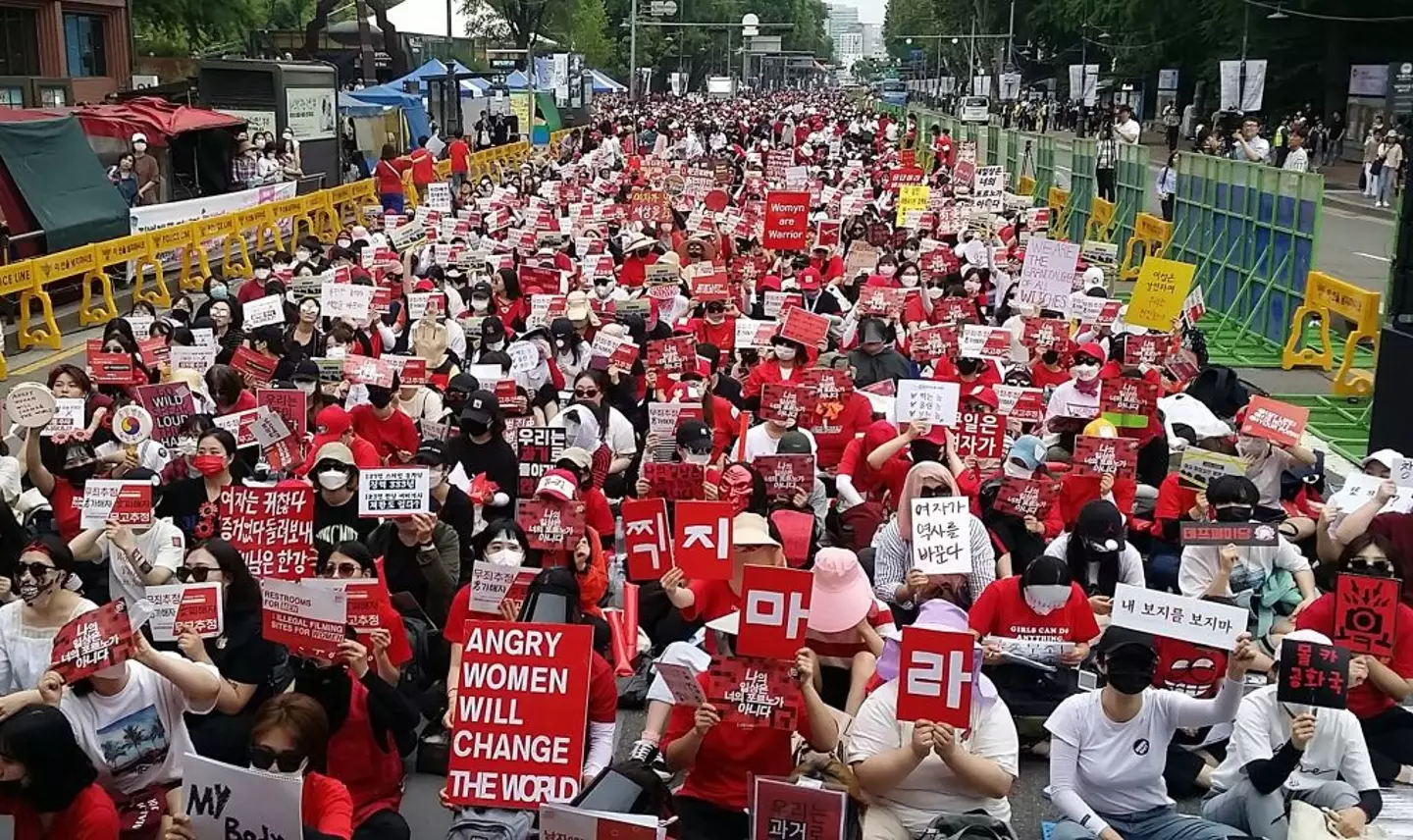The powerful demonstration could have drastically affect the future of the country with birth rates already at an all-time low
Up until this week you have likely never heard of the 4b movement, but Americans are quickly familiarizing themselves with it.
It’s a powerful South Korean campaign, but we’ll get into all that momentarily, for now let’s talk about why something more than 6,000 miles away is having an influence on the US.
In order to do so we’ll run through some events that have shaped modern politics in the nation, and the biggest thing to have happened in the country since the turn of the decade is Donald Trump becoming President-elect.
Donald Trump wins the election
On Wednesday (November 6), Trump won the election by landslide and is set to become the 47th president after crucially taking five of the seven swing states from rival Vice-President Kamala Harris, while leading the count in the remaining two – Nevada and Arizona, which have yet to be called.
Taking to the stage at his campaign’s HQ in West Palm Beach, Florida, former president said he had ‘made history’ as he declared victory even before he officially he won, adding: “This will truly be the golden age for America.”

President-elect Donald Trump won the election by a landslide (Chip Somodevilla/Getty Images)
Donald Trump’s stance on reproductive rights
You’ve probably heard of Roe v Wade, but if you haven’t I’ll quickly brief you – in 1973, a historic decision was passed in the same court it was eventually ousted, almost 50 years later.
It meant that women in all walks of life nationwide had the constitutional right to have an abortion.
But in one of Trump’s final moves in charge of the country as the 45th president, he nominated three of the justices in the Supreme Court that voted to void abortion rights.
Harris was in favour of vetoing the 2022 Roe v Wade decision, but Trump’s stance is a bit foggier.
Speaking during a debate in September, he said when asked would he veto a ban: “I’m not signing a ban. And there’s no reason to sign a ban. Because we’ve gotten what everybody wanted.
“Democrats, Republicans and everybody else and every legal scholar wanted it to be brought back into the states. And the states are voting. And it may take a little time, but for 52 years this issue has torn our country apart.”
Later adding: “And as far as the abortion ban, no, I’m not in favor of abortion ban. But it doesn’t matter because this issue has now been taken over by the states.”

President-elect Donald Trump and Vice-President Kamala Harris discuss abortion laws during their first debate in September (Win McNamee/Getty Images)
What is the 4b movement?
Although it is not clear when it originated, it is believed to have started in 2001 and by 2022 when South Korean President Yoon Suk Yeol was elected it gathered pace amongst women.
It came as the 63-year-old pledged as part of his campaign to abolish the Ministry of Gender Equality, blaming the nation’s low birth rate on feminism.
It is a vow to not get with men with the ‘4b’ meaning ‘four nos’ – no dating men, no sex with men, no marrying men and no childbirth.

South Korean women staging a monthly protest against secretly-filmed spycam pornography in Seoul, back in 2018 (JUNG HAWON/AFP via Getty Images)
How has Trump’s win impacted interest in the movement?
Since Trump took to the stage to declare his win shortly after 2am on Wednesday (November 6), the term started gathering pace with more and more people searching ‘4b movement’ on Google.
The traction has came from one Tweet in particular that has been viewed more than 20 million times on Twitter alone, and screenshots of it have been shared on every social media platform.
It read: “Ladies, we need to start considering the 4B movement like the women in South Korea and give America a severely sharp birth rate decline: no marriage, no childbirth, no dating men, no sex with men.
“We can’t let these men have the last laugh… we need to bite back.”
If women get behind the movement it could result in a drastically lower birth rate in the US despite it already sitting at a record low of 54.5 births for every 1,000 females aged 15 to 44, according to data collated last year by CDC’s National Center for Health Statistics.
To put that into perspective, in 2013 it sat at 62.5 births, while in 1957 there were 123 births per 1,000 females aged 15 to 44.